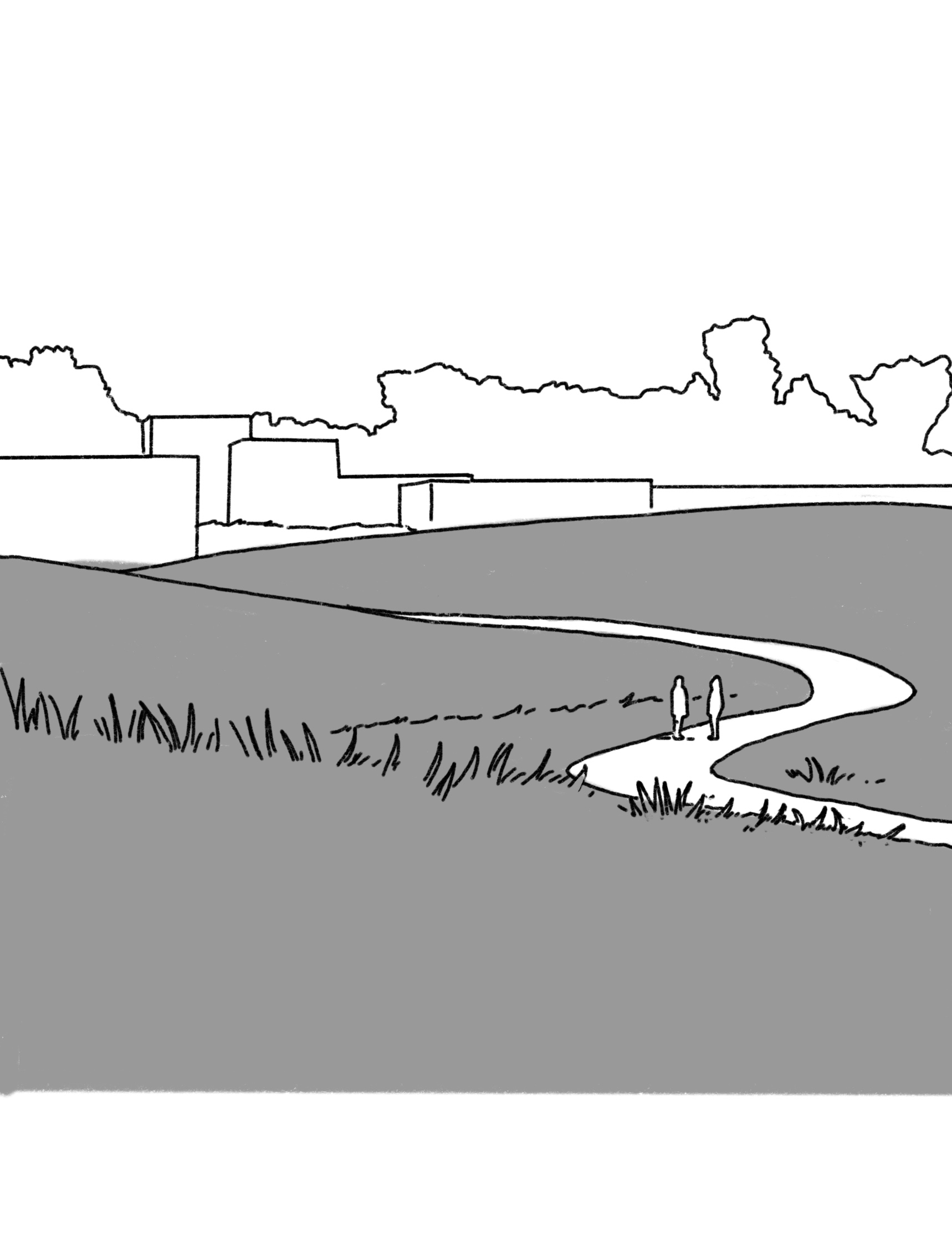Strategy
Mitigation
Maximize Carbon Uptake With Plant Material
As part of their natural biological cycle, plants absorb carbon dioxide, store it as biomass, and lock it into the soil through their roots. Planting dense, multi-layered vegetation - especially fast-growing, and long-living species - can effectively increase the amount of carbon sequestered on a site.
Maximize planting area
Options
...by reducing the ratio of hardscape to softscape.
...by designing open, non-shading, or temporary structures that allow growth underneath.
Case Study
Hoerr Schaudt designed this green roof as an amenity space for an office conversion of the Old Chicago Post Office. Totaling four acres, the roof deck includes four recreation spaces and an event pavilion. The remaining area is a garden, designed with narrow paths that maximize both planting area and immersion in the meadow-like planting. The ratio of softscape to hardscape in these areas is high. The main path is 6’ wide, secondary paths are 3.5’, and maintenance paths are 2’.
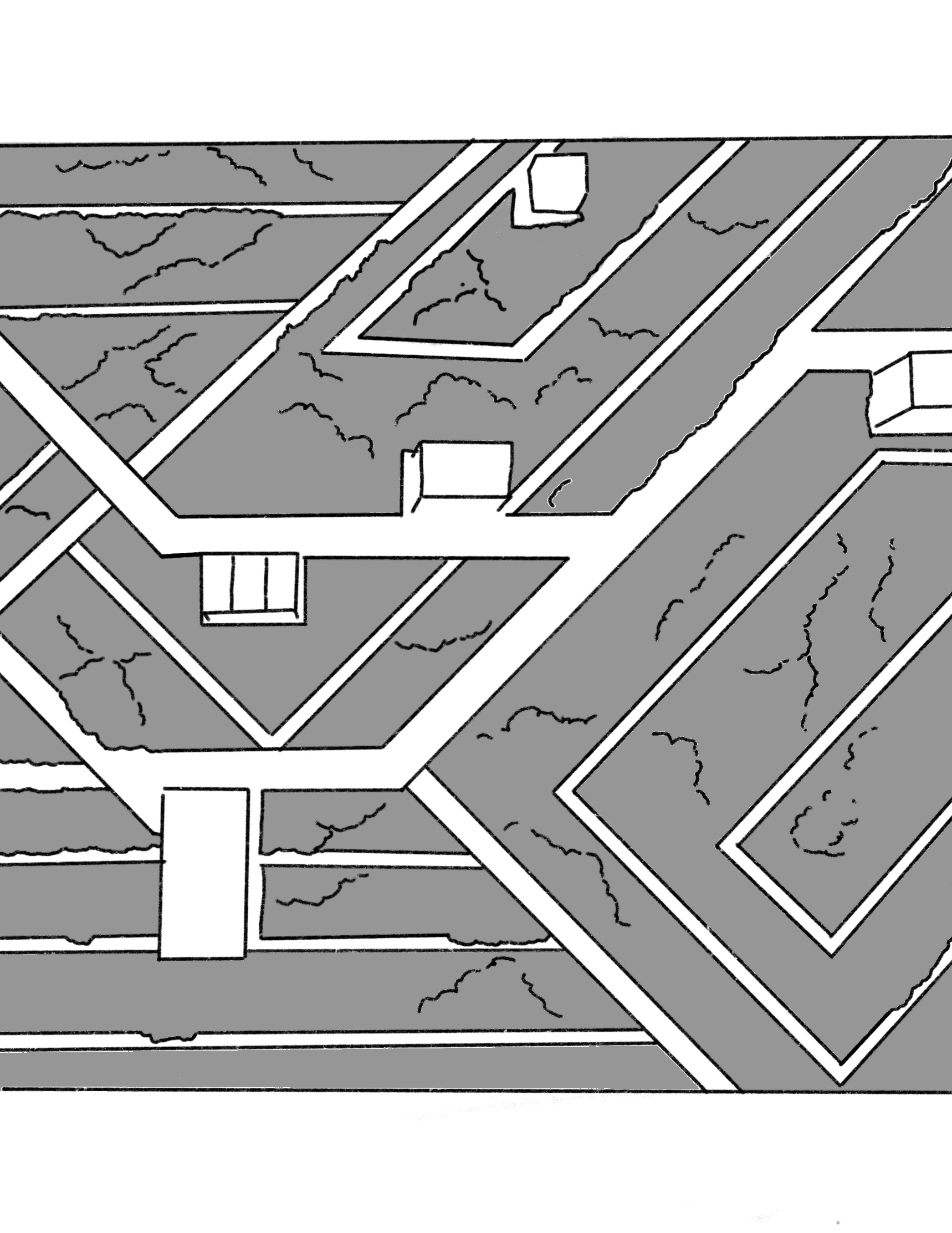
Grow new trees
Options
...such as a forest with multiple layers (vertical diversity, multi-staged forest, forest garden).
...such as a forest with high-density (as in a Miyawaki Forest or tiny forest).
...by specifying tall trees, 35’ and over.
...by selecting deciduous rather than evergreen trees for 50% more carbon absorption.
Case Study
The consolidation of a printing company’s urban production facility exposed more than 13 acres of landscape area. SWA Group’s Ichigaya Forest project transformed more than half the site into new a multi-layered forest. It is modeled on a natural forest with vertical diversity, multiple stages, and a character between an open secondary forest and a dense shrine forest. Almost 300 plant species were used and the project is expected to sequester 30 tons of CO2 annually.
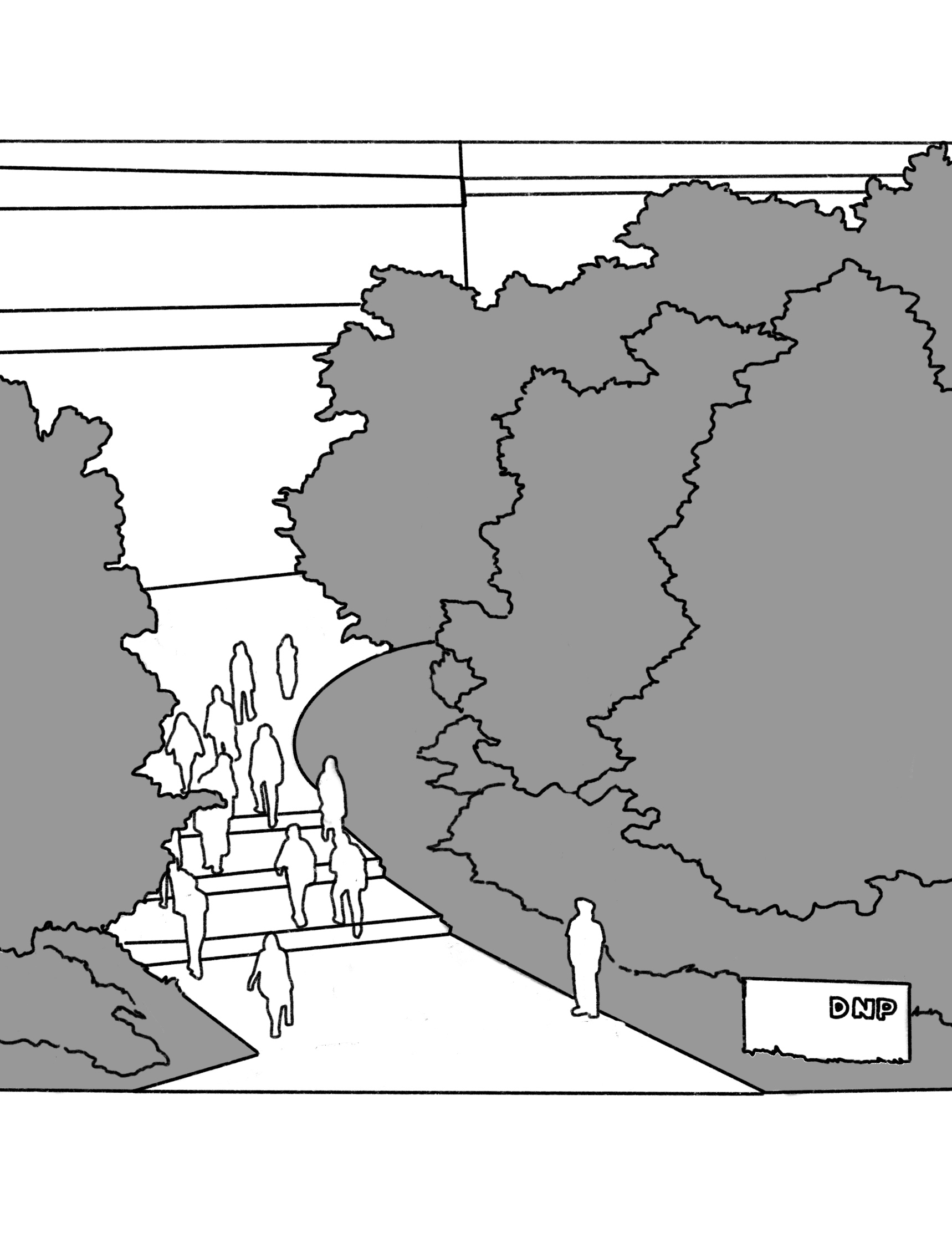
Grow new plants that…
Options
...are fast growing.
...are long lived (including high tolerance or widely adapted species).
...have a longer growing season in the region.
...are high density like bamboo (where appropriate and not invasive).
Case Study
At Suzhou International Expo Center Plaza, SWA Group chose to use a fast-growing plant—native bamboo—planted in dense stands to create rooms in contrast to the large plaza. As the 20’ tall plants are not held up a natural forest context, they are braced with a 2’x2’ grid of bamboo stalks 5’ high.
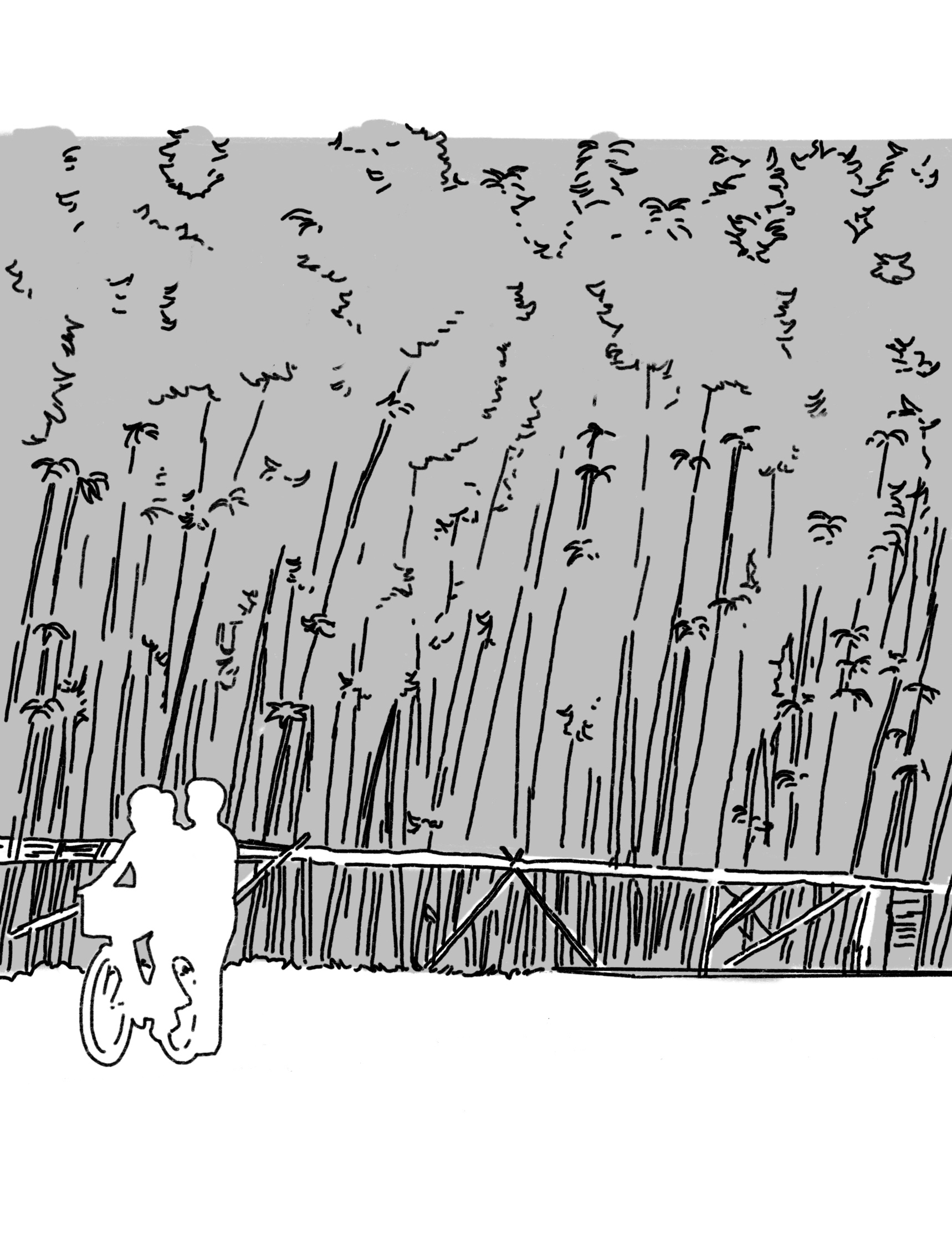
Retain existing vegetation
Options
...by specifying trees that minimize the need for pruning.
...by not removing mature trees in good health.
Case Study
UC Santa Cruz sought to expand Kresge College as the campus accommodates a significant increase in student population. In designing the 8-acre master plan, Studio Gang nestled the new buildings into the coast redwood forest and curved the buildings around significant groves. The project preserves as many healthy trees as possible, only requiring the removal of existing trees in the footprints of proposed new buildings.
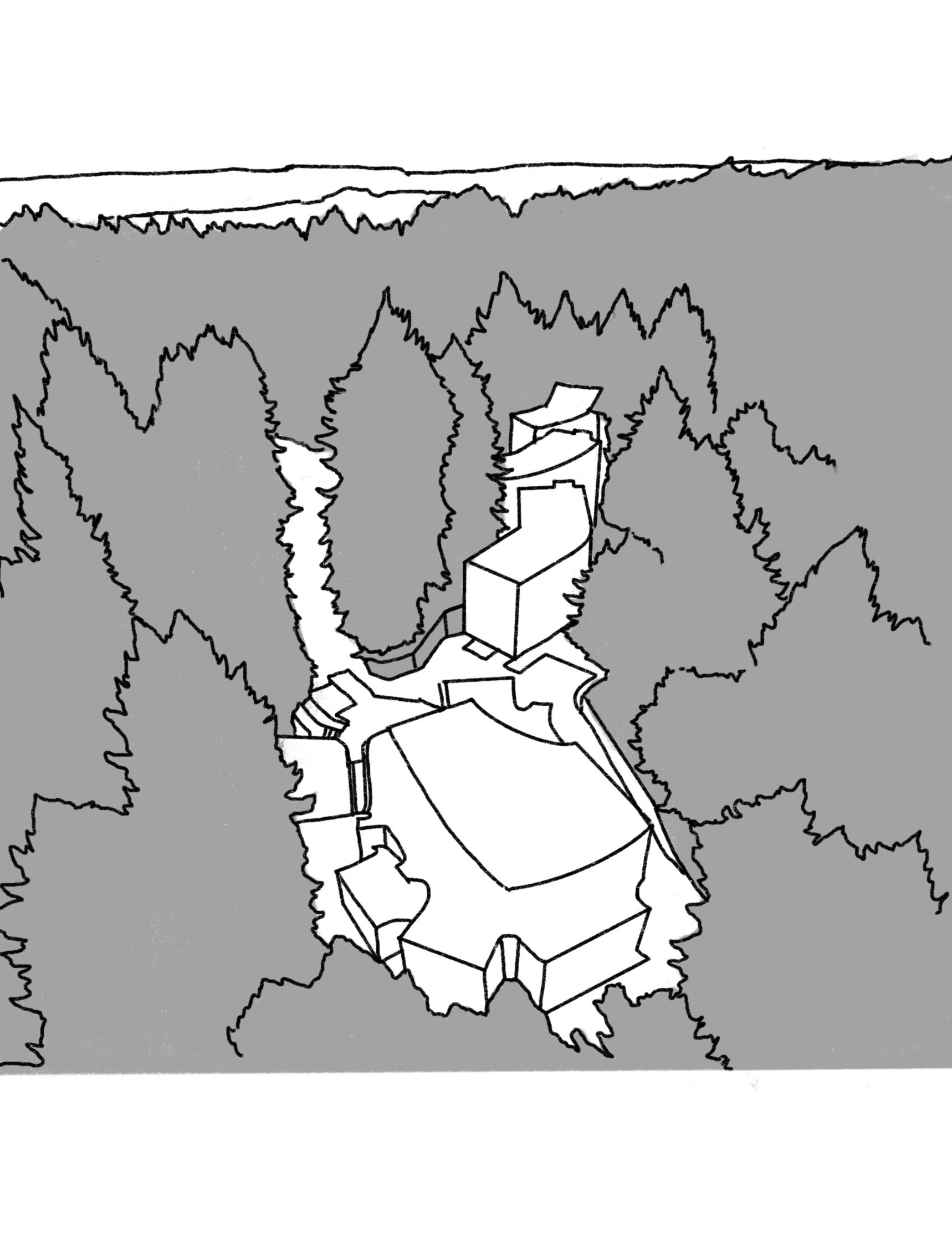
Limit lawn to critical programmatic areas (to maximize higher sequestration planting types)
Options
Case Study
For Glenstone, an art museum, PWP with Larry Weaner Landscape Associates, designed a 230-acre landscape largely comprised of open meadow and forest with a few lawn areas for outdoor sculpture. The 40 acres of meadow, which is on grade and on structure, need considerably less inputs than manicured lawn, using organic methods (no herbicide) before and after seeding, annual mowing, and no irrigation for the native species. Previously the site had been graded for a single-family subdivision with 91 acres of conventionally managed turf.
